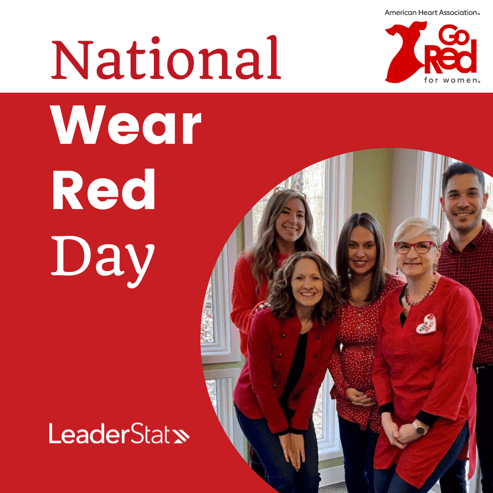February is American Heart Month. Unfortunately, we know that heart disease is the most common cause of death for both men and women in our country. However, it’s important to know that we can reduce our risk tremendously by taking preventative measures.
What You Can Do Right Now
- Understand your risk factors. See a primary care provider regularly to chat about your family history, concerns, and how to prevent heart disease and stroke by living a healthy lifestyle.
- Know your numbers. If you’re unsure where you fall on the health continuum, learn what healthy blood pressure looks like for you and how to easily monitor it at home. Additionally, a quick finger prick can give you a reading on your cholesterol (HDL and LDL), blood sugar (glucose), and triglycerides (types of fat found in your bloodstream).
- Find new ways to manage stress levels. Consider downloading free relaxation apps or taking a free course online.
- Take a course on CPR or Basic Life Support so you can be prepared in an emergency situation. These are offered in-person or virtually through the American Heart Association (AHA).
- Research the early warning signs of a heart attack, and how those differ between men and women.
- Examine your diet and make healthier swaps for processed foods and those that are high in sodium and saturated fat. Did you know? Consuming fiber regularly can help to manage blood glucose levels, especially when it comes from whole grains, vegetables, nuts and seeds.
Statistics (Heart.org and GoRedforWomen.org)
- Black adults are 2x more likely than white adults to die from preventable heart disease
- The #1 cause of heart disease is high blood pressure, also referred to as hypertension
- In the United States, one person dies every 34 seconds from cardiovascular disease
- Cardiovascular disease kills more women than all forms of cancer combined
- 10-20% of women will experience health issues during pregnancy, including high blood pressure, preeclampsia, and gestational diabetes
How to Spot a Stroke
If you suspect someone might be having a stroke, remember to act F.A.S.T.
- F – Face drooping – pay attention if one side of someone’s face is drooping. A quick way to confirm is to ask them to smile. Is only one side moving?
- A – Arm weakness or numbness.
- S – Speech may be slurred or they might experience difficulty talking.
- T – Time. If some or all of the above ring true, it is critical to call 911 immediately.
Tools and Resources
- CDC Resource Page for healthcare professionals and individuals: https://www.cdc.gov/heartdisease/american_heart_month.htm
- Download the American Heart Month Planning Checklist: https://www.nhlbi.nih.gov/sites/default/files/media/docs/AHM%20Planning%20Checklist.pdf
- Understand heart attack, stroke and cardiac arrest symptoms: https://www.heart.org/en/about-us/heart-attack-and-stroke-symptoms
- Go Red for Women: https://www.goredforwomen.org/en/
- Million Hearts Initiative: https://millionhearts.hhs.gov/
(action guides, the ABCs of heart health, heart-healthy recipes, and prevention) - Harvard School of Public Health – disease prevention tips: https://www.hsph.harvard.edu/nutritionsource/disease-prevention/cardiovascular-disease/preventing-cvd/
Donate
- Through February 25, in celebration of American Heart Month, CVS customers can support AHA’s Go Red for Women movement by donating at the register. This can be done at CVS pharmacies nationwide.
- Donate your time by volunteering in your community or hosting a fundraiser: https://raiseyourwayforaha.funraise.org/.
Get Social
- Follow @CDCHeart_Stroke on Twitter
- Follow these hashtags on Facebook and Instagram
- #HeartMonth
- #OurHearts
- #GoRedForWomen
- #MillionHeartsQI

-1.png?width=292&height=64&name=LeaderStat%20Logo%20(4)-1.png)
-1.png?width=1100&name=Blog%20Banners%20(1)-1.png)

-1.png?width=258&name=LeaderStat%20Logo%20(4)-1.png)